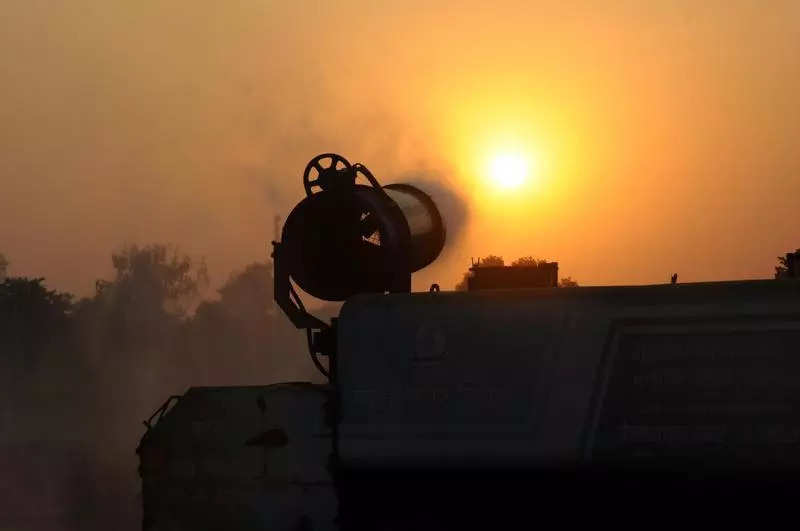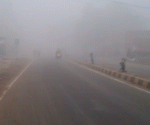Patna Ranked Fourth in Pollution Among Indian Cities, Sasaram Takes Third Spot | Patna News – Times of India

Patna: The overall air quality index (AQI) of Patna went up from 275 to 289 in the last 24 hours, making the capital the fourth most polluted place among 253 cities across the country, according to a Central Pollution Control Board (CPCB) bulletin. A thin layer of smog blanketed the state capital on Tuesday morning, as air quality remained in the “poor” category.
Sasaram, however, remained the most polluted city of Bihar and the third most in the country with an AQI of 297, after Vishakhapatnam (314) and Byrnihat and Durgapur (both 306). Besides Patna and Sasaram, six cities of Bihar — Ara (249), Chhapra (238), Hajipur (236), Saharsa (222), Aurangabad (219), and Rajgir (206) — were in the “poor” AQI category. A poor air quality can cause breathing discomfort to most people on prolonged exposure.
The average AQI of Patna was based on the reading of six air quality monitoring stations, which showed a high level of PM10 (particulate matter less than 10 microns) and PM2.5 (particulate matter less than 2.5 microns). The Muradpur monitoring station recorded the highest AQI of 422, which was in the “severe” category.
Four stations were in the “poor” zone — Samanpura (AQI of 300), DRM office-Khagaul (291), Patna City (285) and Rajbanshi Nagar (266), while the level of pollution was moderate at Planetarium (171).
The average concentrations of PM2.5 in the city stood at 81 micrograms per cubic metre (µg/m3), which is 5.2 times above the recommended limit given by World Health Organisation, while the PM10 was recorded at 140µg/m3. An AQI between zero and 50 is considered “good”, 51 and 100 “satisfactory”, 101 and 200 “moderate”, 201 and 300 “poor”, 301 and 400 “very poor”, and 401 and 500 “severe”.
Chairman of Bihar State Pollution Control Board (BSPCB) D K Shukla said the pollution level deteriorated in the Muradpur area due to the heavy rush of people at Gandhi Maidan, where multiple fairs are being organised, including a book fair. “We have taken cognizance, and the organisers of the fair will be directed to sprinkle water on the ground during night, so that the loose soil settles down for some time,” he said.
He added earlier, the AQI of this area was rising because of road dust and construction sites. “But taking measures like sprinkling water on roads and the use of anti-smog guns by the civic body improved the air quality, and it went down to 250. Patna Municipal Corporation has put all their 27 vehicles to sprinkle water on roads, covering up to 4km areas near the air monitoring stations.
Sasaram, however, remained the most polluted city of Bihar and the third most in the country with an AQI of 297, after Vishakhapatnam (314) and Byrnihat and Durgapur (both 306). Besides Patna and Sasaram, six cities of Bihar — Ara (249), Chhapra (238), Hajipur (236), Saharsa (222), Aurangabad (219), and Rajgir (206) — were in the “poor” AQI category. A poor air quality can cause breathing discomfort to most people on prolonged exposure.
The average AQI of Patna was based on the reading of six air quality monitoring stations, which showed a high level of PM10 (particulate matter less than 10 microns) and PM2.5 (particulate matter less than 2.5 microns). The Muradpur monitoring station recorded the highest AQI of 422, which was in the “severe” category.
Four stations were in the “poor” zone — Samanpura (AQI of 300), DRM office-Khagaul (291), Patna City (285) and Rajbanshi Nagar (266), while the level of pollution was moderate at Planetarium (171).
The average concentrations of PM2.5 in the city stood at 81 micrograms per cubic metre (µg/m3), which is 5.2 times above the recommended limit given by World Health Organisation, while the PM10 was recorded at 140µg/m3. An AQI between zero and 50 is considered “good”, 51 and 100 “satisfactory”, 101 and 200 “moderate”, 201 and 300 “poor”, 301 and 400 “very poor”, and 401 and 500 “severe”.
Chairman of Bihar State Pollution Control Board (BSPCB) D K Shukla said the pollution level deteriorated in the Muradpur area due to the heavy rush of people at Gandhi Maidan, where multiple fairs are being organised, including a book fair. “We have taken cognizance, and the organisers of the fair will be directed to sprinkle water on the ground during night, so that the loose soil settles down for some time,” he said.
He added earlier, the AQI of this area was rising because of road dust and construction sites. “But taking measures like sprinkling water on roads and the use of anti-smog guns by the civic body improved the air quality, and it went down to 250. Patna Municipal Corporation has put all their 27 vehicles to sprinkle water on roads, covering up to 4km areas near the air monitoring stations.
















